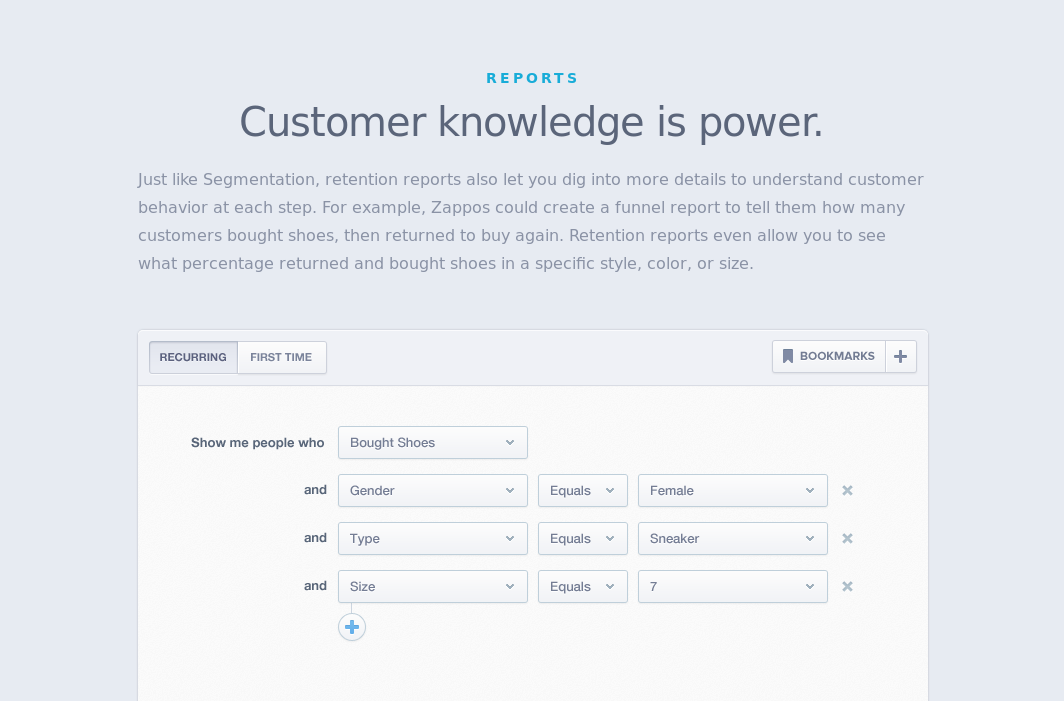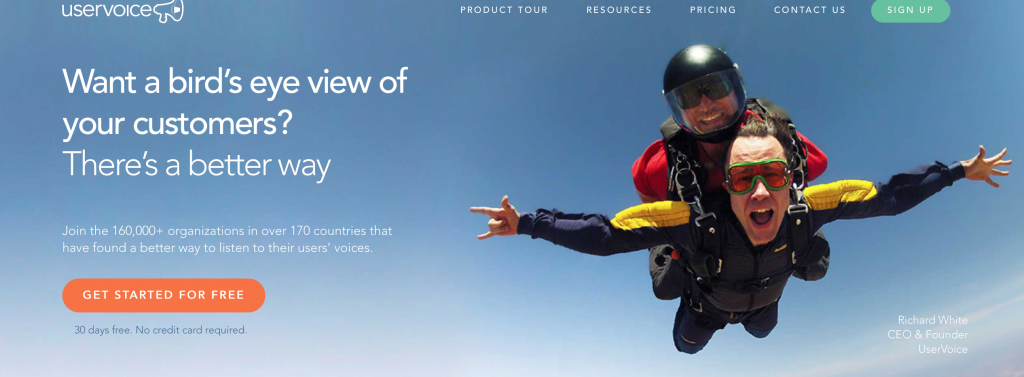Every startup, established company and product launch puts user adoption & growth at the top of the to-do list. More users translates directly into more money.
Unfortunately, the focus on growth only can leave you with poor retention numbers, something of a devil’s bargain (Yeah I know bad joke)
Unless you can gain new customers faster than a tree dropping leaves in the fall, you face a mess, shedding existing users right and left. Retention must be a major focus that works in tandem with growth hacking strategies.
Get Down To The Data
The growth hacking mentality pushes results over process in a data-driven environment. Everything comes down to what works. Designing out-of-the-box growth strategies only works when you can show measurable changes through web and mobile analytics.
The solution? Start using Mixpanel!
Mixpanel offers all the same functionality as Google Analytics but allows you to go into far more depth, want to see how many users arrived at your website from a Google Ad that you where running, live in the US and have not logged in for a month? Mixpanel do that for you!

It also allows you to build funnels so that you can see where you are loosing customers in your sales or onboarding process allowing you to focus in on problem areas and fix them.
Understanding Your Customer
Retention starts with your knowledge of your customer. You can’t build a lasting relationship with a someone you met at the bar if you forgot to get a name and number. The same holds true for your customers. You need to understand their motivations and pain points in order to create a lasting dependence on your product.
Many companies lose out on customers not because they fail to perform market studies, but because their narrow view of marketing applications minimizes their potential platforms. Growth hacking for retention starts at product conception and continues through all aspects of the company.
Make Retention A Priority
The 80/20 rule holds true in today’s marketplace. 80 percent of your revenue typically comes from repeat customers. No business can post sustainable profits without a solid base of loyal users.
You don’t just want a business that turns a profit in the first three years; you want a business that will continue profitability and growth for years to come. By incorporating the drive for retention in product development and the marketing process, you create a blueprint for success.
Designing For The Customer
Product development for startups addresses a customer need or gap in the existing market. This gives you a great place to start but doesn’t point you in a direction for future development.
With a focus on retention, the next gen product should be in development as soon as the first is completed.
Let users explore your product and listen to feedback. They offer incredible value as a product development resource. Look at Lego, a company that applied growth hacking strategies to the toy market.
Facing declining market share and hemorrhaging customers to less expensive brands, they needed a quick turnaround that would address their falling market share. The solution? Get back to the customer. Let them drive new product development.

Lego challenged their customers to create unique and interesting designs using their products. Participating users “sold” their designs to Lego for a fraction of the cost of in-house design.
User-created packages built their own market through the social media platforms, driving more traffic. The cycle of user creation to ready-made packaged product allowed Lego to benefit from crowdsourcing ideas and organic marketing.
Users tell you everything you need to know about your product to:
- Make it better
- Plan the next generation
- Create add-ons and upsells
- Retain their business
They want you to have the information, and all you need to do is listen. Don’t design products based on profitability; design for user ease and comfort. It will pay better dividends and grow your company faster.
Marketing In The New Millennium
Having a product to sell is only one part of the recipe. You have the protein, now you need the seasoning and the tempting aroma. Marketing gets your product info out to the masses. The trick is to reach the right masses and pitch to existing users at the same time. When focusing on product development for startups, everything revolves around new users.
How many people can you get to adopt your product? Six months in, you look around and realize that you may be adding thousands of new users every month, but you are also only holding on to a fraction of your existing users. How do you manage both goals in one campaign? Test, test and test again.
As a startup, you might only have a few thousand dollars to spend on marketing. Getting the most out of it takes a bit of planning and a lot of patience. Invest a small chunk of your budget into one platform and take stock of the results. Remember, growth hacking is all about the data.
A small sample campaign lets you look at your funnel and patch the retention holes before you spend all your marketing capital. After you have the test data, you can start really pushing the platforms.
Not All Email Marketing Is Spam
A lot of marketers now shy away from email campaigns, seeing them as only spam. This is a big mistake. When someone opts in to emails, they want your content. Send it to them. Slow and steady emails sent out over a period of a month or so can garner some pretty incredible results.
Don’t slam your users with all the information at once, but be sure to stay in contact. A drip email campaign should focus on different aspects of your product with each email.

Eventually, readers find the value they are looking for, without a big monetary investment. Uninterested users simply opt out. No harm, no foul on either side.
Facebook has taken the reaction-based email to a high art form. Every time something happens on their social network that might interest you, you get notified. Somebody tagged you in a picture? Here’s an email. One of your friends posted on their wall? Ping, here’s an email. You haven’t logged in to read your pending notifications? Here’s an email. Facebook retains users by engaging with them directly, over and over again. They also garner incredible conversion rates by only giving you a snippet in the email. Yes, you’ve been tagged in a picture, wanna see it? If you do, you need to click through the link embedded in the email. All of these strategies keep users coming back.
Learn About Your Sins along With Your Virtues
Even with the best retention strategies, you will lose some users. Cancellations happen. You can mope about them, ignore them or put them to work for you. When someone cancels, ask them why. You may not like the answers. In fact, you probably won’t. It’s never easy to hear where you went wrong; however, the information is valuable. If multiple users complain about your customer service, it might be time to assess that area of your company.
If the price point makes users blanch and cancel after the trial period, look for ways to offset the sticker shock. The only way to know why a customer canceled is to ask, try using a service like UserVoice in order to get feedback on why they cancelled. Once you know, you can make changes to improve retention in the future.
Expand And Contract Your Service Offerings
Constantly assess your product for added-value options. For example, if you have an accounting app, add automated syncing with the most commonly used software packages. The more value you offer users, the longer they stay users. As you add service options, they can mix and match to create a package that best fits their needs.
At the same time, don’t be afraid to cancel services either. The more you offer, the more difficult it gets for customers to pick out the parts most useful to them. A clean, streamlined product adds more value for most users. A rarely used function only adds clutter, not value.
Growth Hacking For Sustainability
You hear the word hacking, and you think cheating. It’s not. Growth hacking is results-oriented, much like the hacking process. Try one thing. If it doesn’t work, go on to the next. It is a methodical process that helps you do a lot with a little. Creating an exceptional sales funnel that drives traffic, conversions and retention starts with the right combination of growth hacking services.




